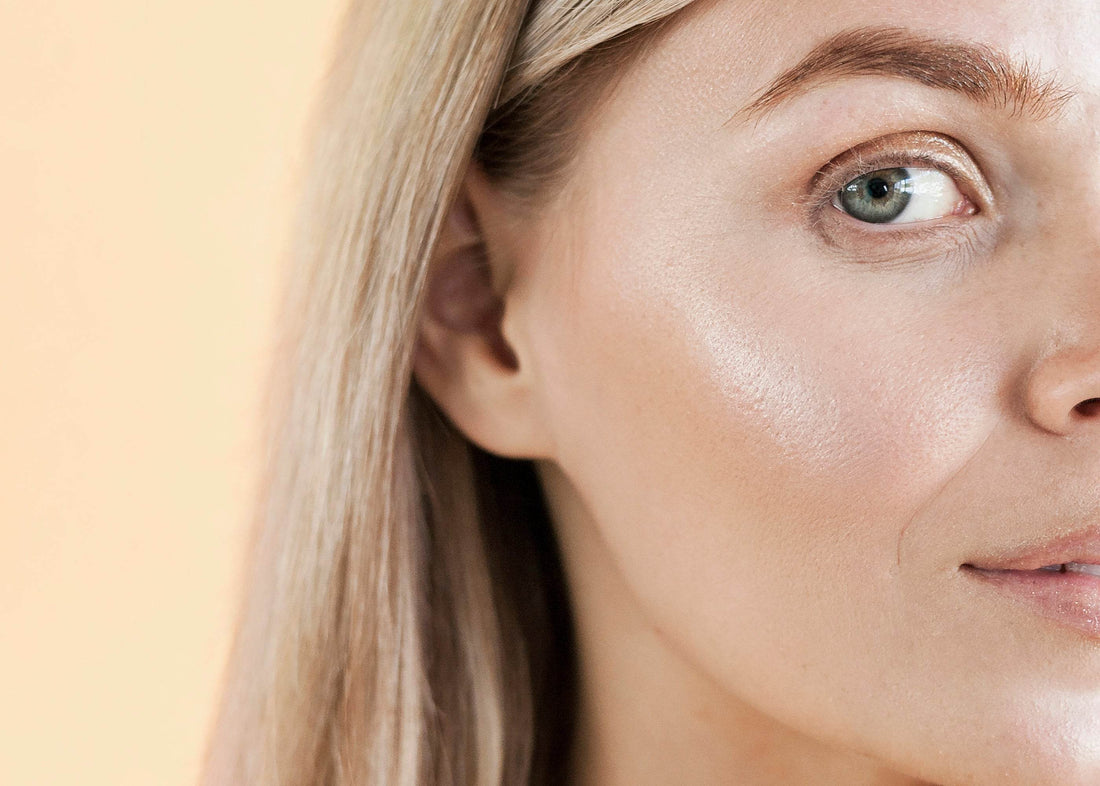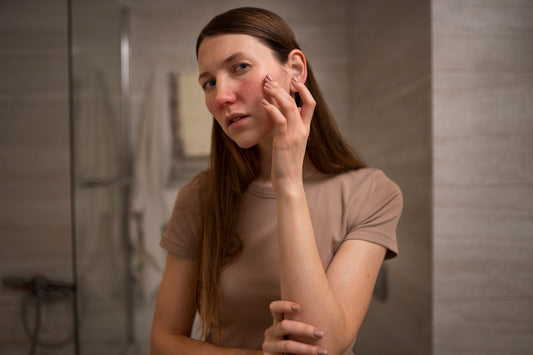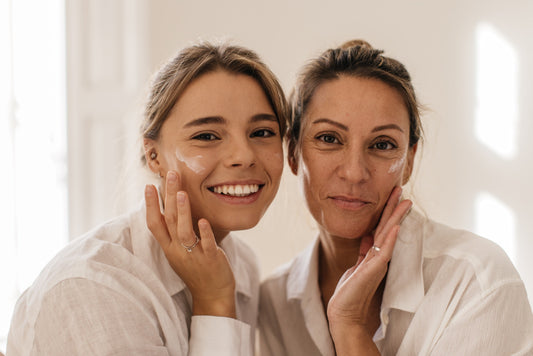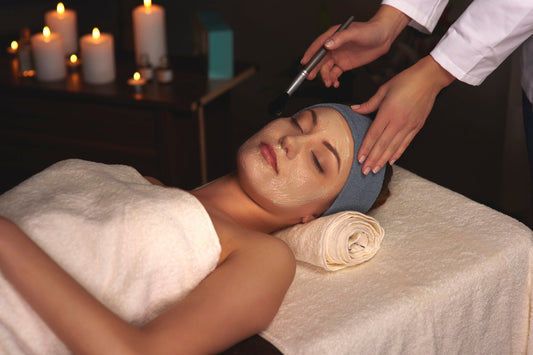Dry Skin vs Dehydrated Skin: How to Tell the Difference

It is common to confuse dry skin with dehydrated skin because these two terms are often used interchangeably. However, while they share some similarities, dry skin and dehydrated skin refer to two distinct conditions. Knowing the difference between these two types of skin is essential in order to choose the right skincare products and provide your skin with what it truly needs.
Table of Contents
Introduction: Dry Skin and Dehydrated Skin, What's the Difference?
Many people use the terms dry skin and dehydrated skin interchangeably, without realizing they refer to two different issues. While both conditions share symptoms like tightness, they have different origins and require different treatments. Dry skin is associated with a lack of lipids, while dehydrated skin suffers from a lack of water. Therefore, understanding these two states is crucial to avoid mistakes in skincare and properly adapt your beauty routine.
Types of Skin: A Starting Point for Understanding Your Skin
Before distinguishing between dry and dehydrated skin, it is important to understand the four main skin types:
- Oily Skin: Tends to produce excess sebum, leading to shine and enlarged pores.
- Dry Skin: Lacks sebum, making the skin rough, flaky, and prone to dehydration.
- Normal Skin: Well-balanced, neither too oily nor too dry. It has an even skin texture and shows no signs of dehydration.
- Combination Skin: A mix of different zones (T-zone more oily and cheeks drier), which requires a specific skincare approach.
What is Dry Skin?
Dry skin is a skin type that lacks lipids (natural oils). These lipids play a key role in protecting the skin, preventing water loss, and maintaining hydration. When the skin is dry, the production of sebum is insufficient, leading to a rough texture, tightness, and sometimes itching. Dry skin may also present flakiness and redness.
Characteristics of Dry Skin:
- Rough Texture: The skin often feels rough to the touch.
- Tightness: A sensation of tightness, especially after cleansing or exposure to cold weather.
- Flakiness: Small flakes or patches of dead skin may form.
- Redness: Redness can appear, particularly after using harsh products.
Dry skin is more sensitive to external aggressions like weather changes, wind, or harsh products. It typically responds well to nourishing treatments with rich textures like oils.
Dehydrated Skin: A Temporary Lack of Water
Dehydrated skin is not a skin type per se. It is a temporary state that can affect any skin type, whether oily, dry, normal, or combination. Dehydrated skin lacks water, disrupting its balance and normal functioning. This condition can be caused by external factors such as temperature changes, pollution, prolonged sun exposure, poor diet, or the use of inappropriate products.
Characteristics of Dehydrated Skin:
- Temporary Tightness: The feeling of tightness is more noticeable after cleansing or prolonged exposure to extreme weather (cold or heat).
- Dull Appearance: The skin loses its radiance, giving it a tired or aged look.
- Surface Dehydration: Although the skin may seem oily or dry in some areas, dehydration affects the skin's surface.
- Dehydration Lines: The appearance of fine lines, especially around the eyes and mouth.
It is essential to note that dehydrated skin is temporary, but if left untreated, it can have lasting effects on the skin, preventing it from functioning properly.
How to Identify Dry and Dehydrated Skin?
1. Dry Skin:
- Constant Tightness: This symptom is consistent, and the skin generally remains dry throughout the day.
- Roughness and Flakiness: Dry skin may peel easily, especially after cleansing or exposure to cold.
- Increased Sensitivity: Dry skin is more prone to irritation and redness.
- Nourishing Care Required: Dry skin responds well to products rich in oils and waxes.
2. Dehydrated Skin:
- Temporary Tightness: Tightness is usually short-lived and disappears once the skin is hydrated.
- Dull and Tired Appearance: Dehydration gives the skin a tired, lackluster look.
- Improvement with Hydration: Dehydrated skin responds quickly to hydrating treatments (light creams, hydrating serums).
- No Flakiness: Unlike dry skin, dehydrated skin does not typically show severe flakiness.
Comparison Between Dry and Dehydrated Skin
| Criterion | Dry Skin | Dehydrated Skin |
|---|---|---|
| Definition | Lack of sebum, skin is less oily and rougher | Lack of water, temporary state of dehydration |
| Permanence | Permanent, depending on the skin type | Temporary and reversible with hydration |
| Causes | Lack of lipids in the skin | Environmental factors, stress, climate, diet |
| Symptoms | Constant tightness, rough skin, flakiness | Temporary tightness, dull complexion, fine dehydration lines |
| Treatment | Nourishing care with oils and waxes | Light, soothing hydrating treatments, water-based serums |
How to Treat Dry and Dehydrated Skin?
Dry Skin:
- Opt for rich creams with natural ingredients (Alteromonas, jojoba oil, shea butter) to nourish the skin.
- Use gentle cleansers without soap to avoid stripping the skin.
- Protect your skin from cold and sudden temperature changes.
- Incorporate nourishing masks into your weekly routine to restore hydration and softness.
Dehydrated Skin:
- Hydrate deeply with hydrating creams and serums containing potent ingredients (Alteromonas, algae, raspberry, etc.) to hydrate the skin.
- Drink plenty of water to rehydrate from within.
- Avoid drying products like harsh cleansers or alcohol-based formulas.
- Use facial mists throughout the day to refresh and rehydrate the skin.
Conclusion: Dry or Dehydrated Skin?
The distinction between dry and dehydrated skin is essential for choosing the right products. Dry skin is a skin type characterized by a lack of lipids, while dehydrated skin lacks water, typically as a temporary condition. By correctly identifying your skin's state, you can adapt your products and routine to provide the necessary hydration or nourishment.
Remember, each skin type requires personalized care. If you are unsure about your skin's condition, don't hesitate to consult a skin professional or dermatologist for an accurate diagnosis.






